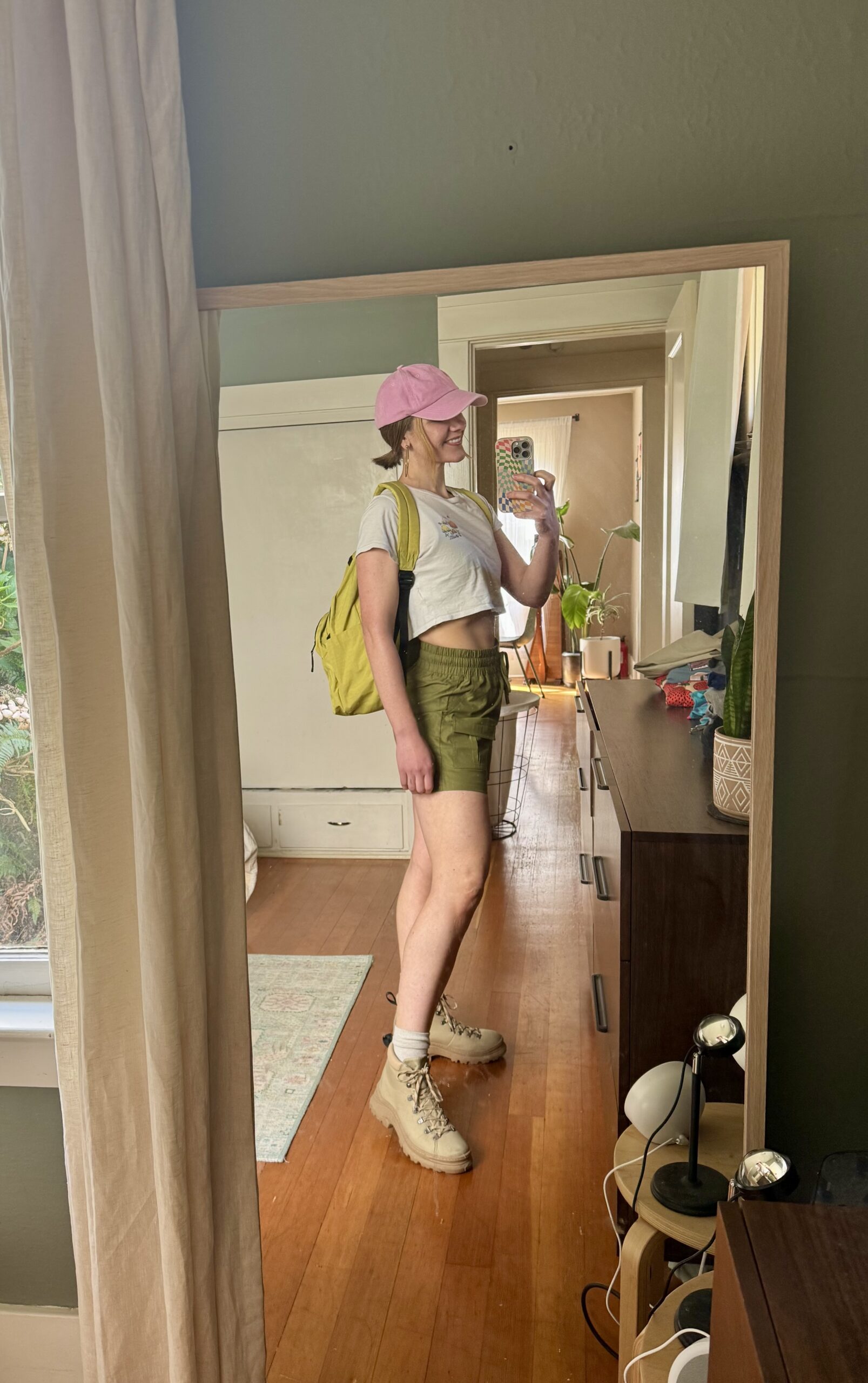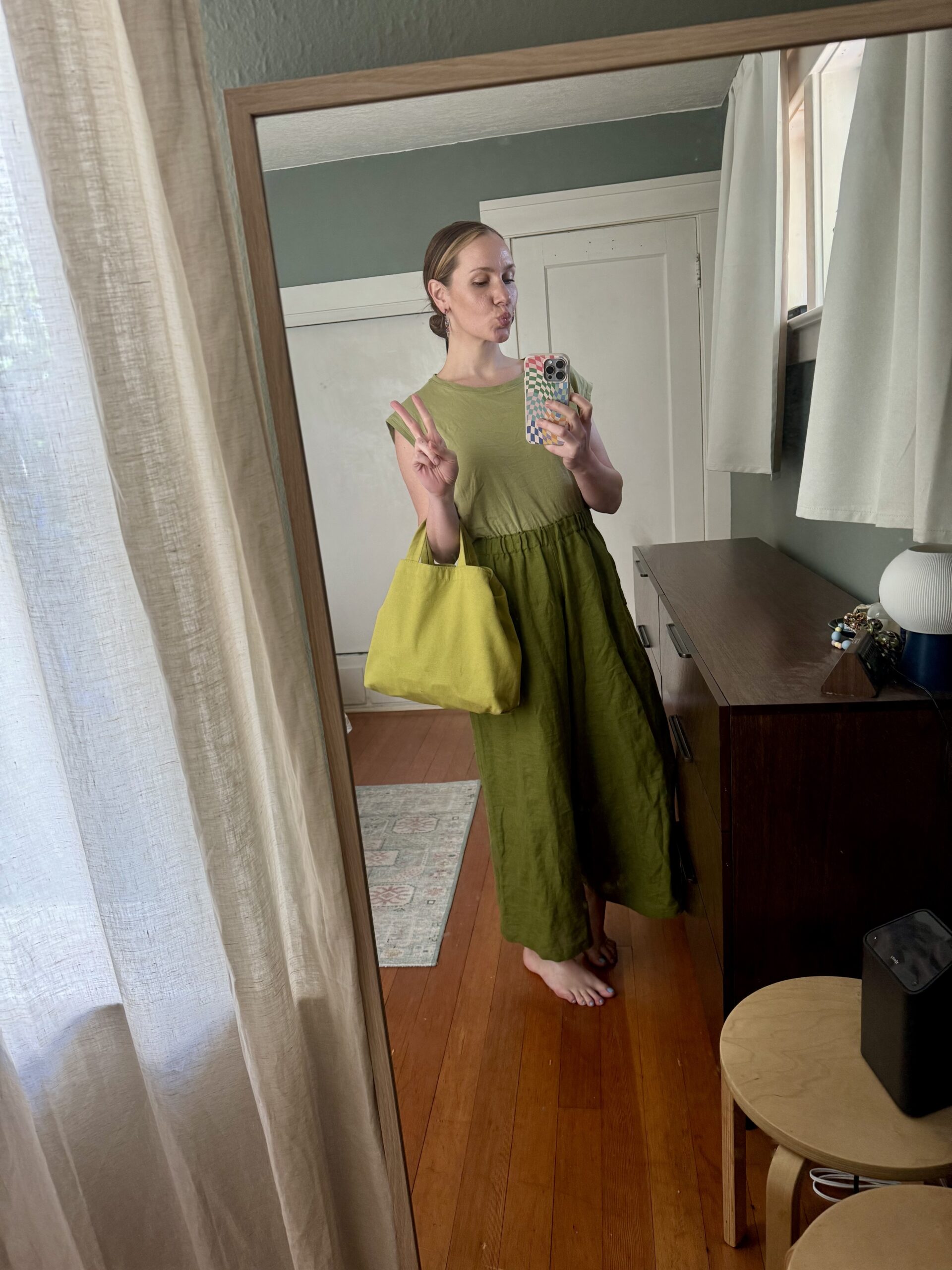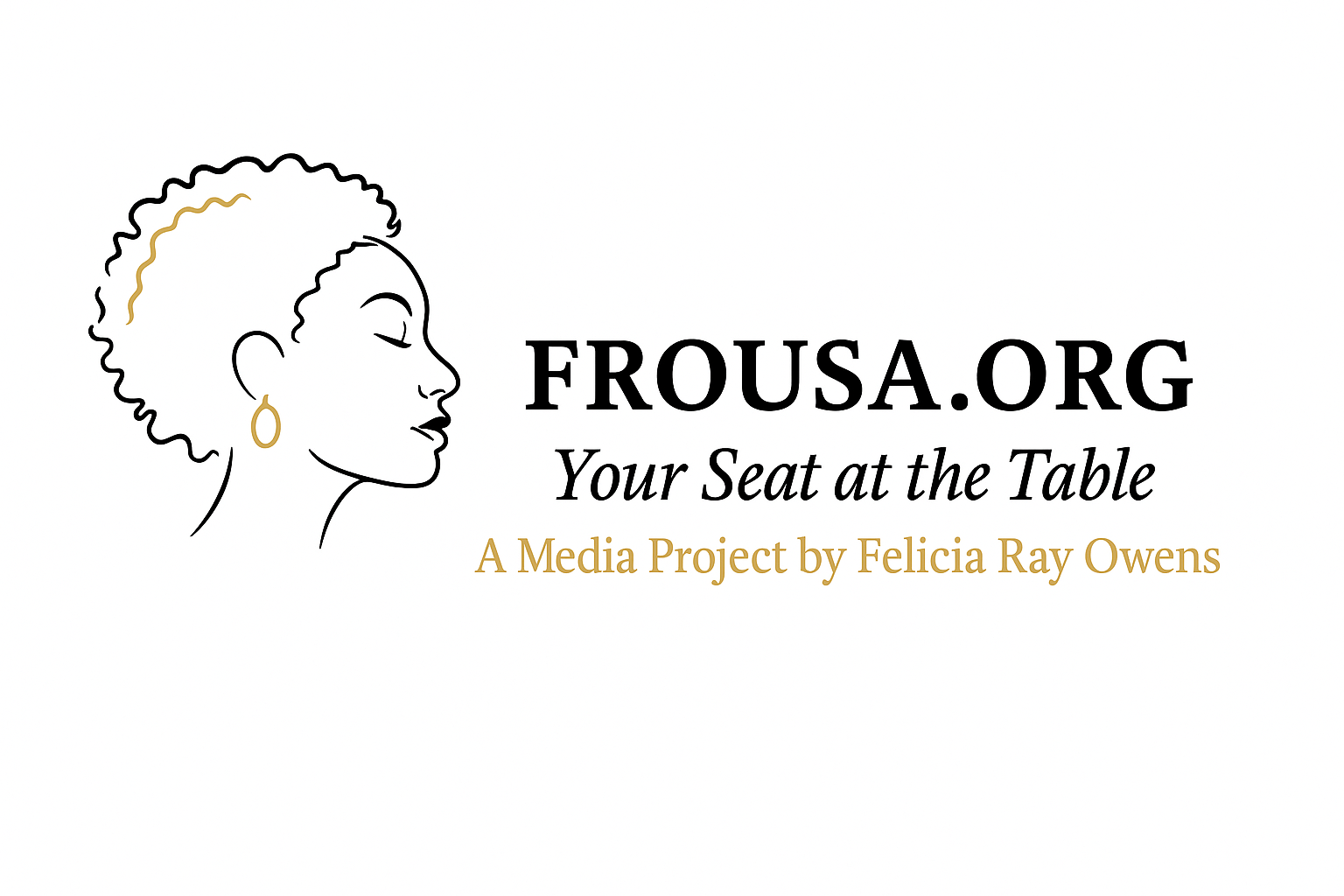On the heels of my birthday last spring, I spontaneously decided to embark on an entire year shopping exclusively secondhand for clothes. Thrifting and consignment shopping have been part of my responsible fashion endeavors for years, but I was still heavily blending in new items as well. While I love supporting sustainable and ethical fashion brands, the fact that there are currently enough clothes to dress the next six generations on our planet was yet another nudge for me to prioritize using what’s already here instead of investing in newly produced items.
“The fact that there are currently enough clothes to dress the next six generations on our planet was yet another nudge for me to prioritize using what’s already here.”
Full disclosure, I gave myself permission to purchase new items in a few categories: Intimates and socks (for obvious reasons), swimwear (if necessary), and shoes (if necessary). Anything coming in contact with private bits feels worth buying new, and functional shoes have to be just the right fit. Still, I tried to be mindful of my if necessary qualifier in those categories to avoid impulsive purchases.
At the risk of sounding pompous, I’ll admit that my initial motivations for taking on this challenge felt sacrificial. I’m going to do a good thing for our earth by withdrawing my dollars from the fashion industry! This may be true (albeit a very small sacrifice in the grand scheme of things), but I ended up experiencing tremendous personal benefits from the endeavor. (Funny how often we end up feeling better when we opt out of capitalist consumeristic habits, isn’t it?)


The first thing that I noticed was a shift in my online experience. I no longer paid any attention to the perfectly curated ads placed in my algorithm because I knew I wouldn’t be adding anything to my digital cart. It felt empowering to swipe past enticing sales for cute — even responsibly made — clothing and not extend any mental energy hemming and hawing over if and what to buy. After a week, I noticed that the clothing ads stopped altogether. Efficient algorithms don’t want to waste ad spend on eyeballs that aren’t taking further action. Now I was really liberated. I didn’t even know about the sales I was missing or the capsule launches from my favorite brands. With this newfound freedom, I was able to clearly see in hindsight just how much time I had previously spent unconsciously perusing purchases that may or may not be made.
“I was able to clearly see in hindsight just how much time I had previously spent unconsciously perusing purchases that may or may not be made.”
After excusing myself from online ads, I was now only shopping when I actually intended to shop instead of being ambushed by the dress-I-never-knew-I-needed in the middle of checking the news or catching up with friends.
So, where was I shopping now? It took some time to figure out what worked for me.
There are so many options for secondhand shopping these days, but consistently scouring all of them felt like too much energy. I’m lucky to live in a city with an abundance of well-curated consignment stores that I could pop into. After exploring several, I naturally settled on two that became my regular stops for both buying and selling clothes.
With a running list on my phone of perceived gaps in my closet to fill, I began to anticipate these shopping trips as treasure hunts. There was no longer the option of sizing up or swapping out a color. Either an item was right for me or it wasn’t. Of course, it can be a little heartbreaking to put a vintage jacket back on the hanger because it’s just slightly too small, but it makes finding the perfect piece that much more thrilling.
“There was no longer the option of sizing up or swapping out a color. Either an item was right for me or it wasn’t.”
Easing into my secondhand rhythm, I noticed myself trying on items that I never would have selected online. From choosing a coat three times my usual size to a pattern way outside my comfort zone, shopping this way reintroduced an element of spontaneity to styling myself. In a world of endless options and scientifically precise marketing, it feels almost playful to enter a store with no idea what sort of outfit I might leave with. Instead of my clothing purchases being heavily influenced by the marketing campaign that surrounded the items, all of that was stripped away, and I learned to develop my own sense of vision and style when evaluating pieces.
As my style expanded, I simultaneously began to refine it in key areas to avoid ending up with a cluttered closet full of incohesive items. First off, I became deeply acquainted with the color palette that suits me best (for those familiar with seasonal color analysis, I’m a Warm Spring). While I’m obviously free to wear whatever I want, knowing the tones and hues that make me feel best allows me to scan racks of clothing quickly and avoid wasting time on items that I know won’t make me shine.


I tend to keep more of an open mind when trying on various silhouettes, but I’ve learned key outfit formulas that I know I’m most likely to reach for over and over based on my lifestyle and body shape. (Two years ago, a dear friend who is a brilliant stylist helped me identify some of my basic outfit templates, and getting dressed has been so much easier ever since.) For example, a form-fitting top with a flared or baggy pant is almost always a winning combination for me — so I don’t try on many slim-fit trousers, no matter how great the color may be.
From both a quality and environmental perspective, I’ve started paying way more attention to fabric composition. Slowly eliminating synthetic blends from my closet doesn’t only make me feel better, but it also has elevated the aesthetic of my wardrobe. Natural fibers just look better!
These three parameters — color palette, key silhouettes, and fabric types — keep me focused while staying open and curious on shopping days. Since it’s unlikely I could even find the exact item and size that I’d need to keep up with the latest trends, I pay virtually no attention to them. Instead of my aesthetic attention being scattered across the latest “core” style on IG or must-have items, I’m getting deeper and deeper acquainted with my own personal style. My body. My coloring. My vibe. My preferences. This little shift isn’t so little, it’s a statement to myself that I can trust my own tastes and don’t need to look externally for a compass to guide my closet.
“This little shift isn’t so little, it’s a statement to myself that I can trust my own tastes and don’t need to look externally for a compass to guide my closet.”
Shopping secondhand has allowed me to focus on forming some solid style edges instead of being fashion putty shaped by churning trends. Simultaneously, it’s opened me to new possibilities. I’ve learned that my personal taste can be much bolder than I’d previously allowed. Some of my favorite staples now are items that never would have made it onto a wishlist based on my Pinterest boards, but caught my eye when I saw them in real life.
I’ve ordered my fair share of polka-dot boxes from ThredUp over the last decade, and there have been some fantastic finds, but more often than not, the items don’t fit or look how I’d hoped. I also noticed that my brain starts getting into that digital addictive mode when perusing sites with such massive amounts of inventory. With cart timers counting down and new items added daily, my breathing gets shallow and I end up buying deals I don’t really need. This feels in stark contrast to the slow spaciousness that I feel in my body when I’m in a local thrift or consignment store.
Many of my friends have excellent luck on Poshmark or Depop, but I have yet to venture into that territory. Anecdotally, it sounds like those platforms are perfect for those scouring the secondhand world for a particular item. I’d certainly give it a try if I genuinely needed to find something that my local favorites couldn’t provide.


Recently, my thrifting world opened up even more when I was introduced to the possibilities unleashed by fabric-dying services such as SUAY. Now, an item that fits me well but has a small stain or is made in a light color that I don’t prefer can be affordably transformed into a hue I adore through their community dye baths.
When my year of secondhand shopping was completed last month, I did have a few items that I wanted to purchase from my favorite responsible brands. Immediately, I felt that forgotten but familiar sensation of decision fatigue and doubt set in. Toggling back and forth between colors and debating the merits of an added inch to the sleeve from size to size, the cost of the new items was more than monetary. The cost included my attention, my peace, the incessant questioning if I made the right choice — because there are so many choices.
I am embarrassed to admit how many hours I spent zooming and measuring and comparing very basic t-shirts from three different websites. The option of optimizing our choices can start to feel like a personal obligation to do so. For someone with perfectionistic tendencies, even these little choices can quickly become time-consuming chains.
“I’ve traded in the overwhelming abundance of endless items for the luscious abundance of the unexpected, local roots, treasure hunting, and creativity over convenient consumption.”
After way too much time staring at my phone, I made my new purchases and then exhaled and gave myself permission to stick to shopping secondhand. Not as a sacrifice for the world, but as a service to myself. There will inevitably be times when I do acquire something new (and get to support a responsible brand in the process!), but overall, I feel settled in my secondhand ways.
Last week, some friends and I went to a little party at our favorite consignment store. As we ate cake, took photos, giggled, and chatted with employees who have become friends, it became even more apparent to me that this is what my preferred abundance feels like. I’ve traded in the overwhelming abundance of endless items for the luscious abundance of the unexpected, local roots, treasure hunting, and creativity over convenient consumption.
Ellie Hughes is a Contributing Editor at The Good Trade. She spent several years as a sustainable fashion blogger and leading the marketing for brands aiming to operate with ethics and the environment as their priority. She is now a freelance writer and marketing consultant living in Portland with her husband, two young daughters, and corgi.



